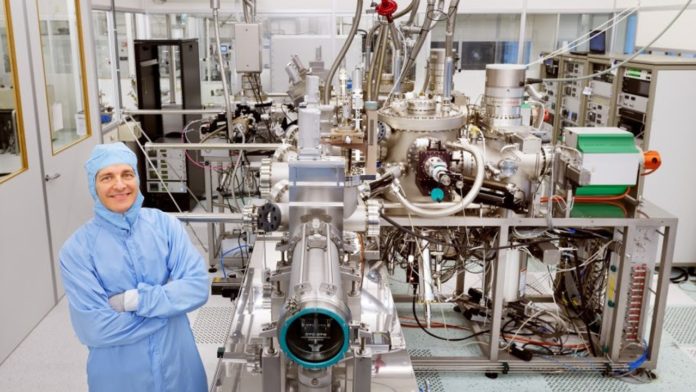Eindhoven University of Technology’s (TU/e) scientific breakthrough in the field of photonics has been declared ‘Breakthrough of the Year’.
One of the world’s top scientific journals, Physics World did so. Professor Erik Bakkers made this groundbreaking discovery. He and his team found a way to emit light using silicon – something that most deemed impossible.
Currently, this substance is used to manufacture electronic chips. This is a vital breakthrough to enable the switch from electronic to photonic chips. Electronic chips transmit electronic signals, while, as the name suggests, photonic chips use light signals. So, they’re much faster.
Why it won
Physics World’s jury member and editor, Hamish Johnston, explains why this specific research has been crowned the best of the year. “Silicon devices drive our information-based society. But silicon’s inability to emit light has held back development in telecommunications and other advanced optical applications.”
“Baker’ team has created a silicon-based material that emits light at telecommunication wavelengths. They’ve, therefore, opened the door to a whole new world of applications for silicon devices.”
Research leader, Erik Bakkers, is very proud of the prize. He’s won it along with not the TU/e’s Elham Fadaly and Alain Dijkstra. The honour also goes Jens Renè Suckert from the Friedrich-Schiller-Universität Jena in Germany and an international team of collaborators.
“We’ve been working on this for a very long time. So, it’s fantastic that we finally succeeded. It’s a great achievement by the whole team,” Erik says.
‘Enormously proud’
Robert-Jan Smits, the University’s Chairman of the Executive Board, says he is pleased with the recognition. “We’re enormously proud of Erik Bakkers’ group’s pioneering work. As far as we are concerned, Physics World’s recognition is entirely justified.”
“Erik Bakkers is the absolute world leader in the field of nanowires. His work is simultaneously both fundamental and application-oriented. It will undoubtedly lead to further breakthroughs that will benefit the whole world.
Researchers from the German universities of Jena and Munich and the Linz University in Austria also helped the TU/e team made the breakthrough possible.
Translator: Melinda Walraven
















